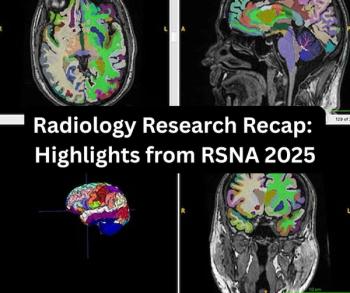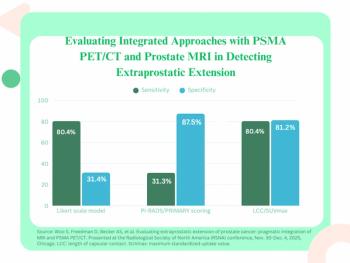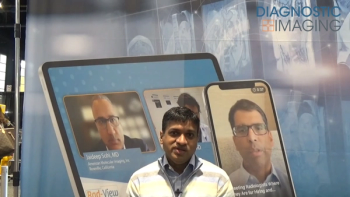
Gymnastic complaints extend beyond common growth plate injuries
Adolescent gymnasts are developing a wider variety of arm, wrist, and hand injuries than previously described in gymnast-related medical literature.
Adolescent gymnasts are developing a wider variety of arm, wrist, and hand injuries than previously described in gymnast-related medical literature.
Of the 125 patients evaluated in a study presented at the 2008 RSNA meeting, researchers isolated the MRIs of 12 gymnasts aged 12 to 16. The images revealed a pattern of injury that spanned far beyond the growth plate injuries commonly associated with gymnasts and regularly described by physicians.
"What we found was that the injuries occur in multiple levels not limited to the classic injuries at the growth plate," said lead researcher Dr. Jerry Dwek, an assistant clinical professor of radiology at the University of California, San Diego.
Other injuries related to the gymnasts' activities included a stress fracture at the proximal radius, triangular fibrocartilage ligament tears, and metacarpal head (knuckle) fractures.
"The implication is that parents need to be aware that gymnasts don't just hurt their wrists," said Dwek, who is also a partner of San Diego Imaging at Rady Children's Hospital and Health Center. "When gymnasts complain of pain, it needs to be taken seriously."
Both parents and doctors must also be aware of the different injuries gymnasts are susceptible to, even if it's not at an elite level, Dwek said. Any child who is a gymnast can have these kinds of injuries.
The research did not take into account the levels or types of exercise of the young gymnasts, but Dwek said further study of these kinds of details could help isolate particularly high-risk routines. Past literature has described men complaining of the pommel horse routine, for example, or women having a difficult time with floor exercises.
These are physically, medically explainable complaints, he said.
For now, Dwek's research shows that young gymnasts can develop a wider variety of injuries than previously realized.
"There's an old doctor adage," Dwek said. "A doctor only diagnoses what he knows, and he only knows what he diagnoses."
If so, Dwek's study adds to the range of musculoskeletal injuries that radiologists must recognize as they go through the mental gymnastics to successfully diagnose them.
For more information from the Diagnostic Imaging and SearchMedica archives:
Newsletter
Stay at the forefront of radiology with the Diagnostic Imaging newsletter, delivering the latest news, clinical insights, and imaging advancements for today’s radiologists.



























